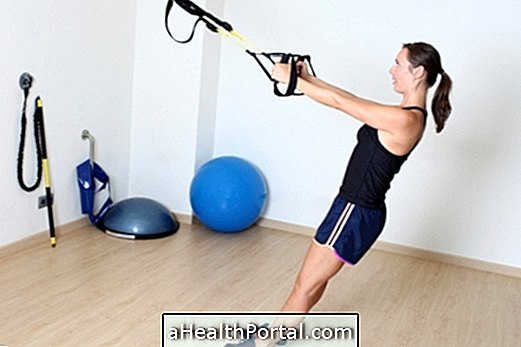The Mini Mental State Exam, originally known as Mini Mental State Examination, or just Mini Mental, is a type of test that allows you to quickly assess a person's cognitive function.
Thus, this test can be used not only to assess whether someone has a cognitive deficit, but also to assess the mental function of the elderly with dementia over time. With this evaluation it is possible to go evaluating the outcome of the treatment, for example, since if the result improves, it is a sign that the treatment is having a positive impact.

How is the exam done?
The Mini Mental State Exam evaluates 5 major areas of cognitive function, which include orientation, retention, attention and calculation, recall, and language.
Each area has a set of questions that, if answered correctly, add up to 1 point for each correct answer:
1. Orientation
- What year are we?
- What month are we in?
- What day of the month are we on?
- What season are we in?
- What day of the week are we on?
- What country are we in?
- In what state / district do you live?
- Where do you live?
- Where are we now?
- What floor are we on?
For each correct answer, 1 point should be assigned.
2. Retention
To evaluate retention, you must say 3 different words for the person, such as "Pear", "Cat" or "Ball" and ask the person to decorate them. After a few minutes you should ask the person to repeat the 3 words and, for each correct word, one must give 1 point.
3. Attention and calculation
The attention and the calculation can be evaluated through a simple technique that consists in asking the person to go counting from 30 to behind, always subtracting 3 numbers. You must ask for at least 5 numbers, and for every one assign 1 point.
If the person fails to subtract, one must continue to subtract the three numbers from the number that was given as wrong. However, you should only allow 1 single error when subtracting.
4. Evocation
This evaluation should only be done if the person remembered the 3 words in the "retention" test. In this case, you should ask the person to say the 3 words again. For every right word you must give yourself 1 point.
5. Language
In this group one must ask several questions:
a) Show the wristwatch and ask "What's this called?"
b) Show a pencil and ask "What's this called?"
c) Ask the person to repeat the phrase "The rat scratches the cork"
d) Ask the person to follow the orders "I will give you a paper. When I give you the paper, take it with your right hand, fold it in half and place it on the floor." Give 1 point for each well-executed action: pick up with the right hand, fold the paper and put it on the floor.
e) Show a card with something written for the person and ask them to read and make the simple order that is on the card. The order can be "Close your eyes" or "Open your mouth", for example. Give 1 point if the person does it correctly.
f) Ask the person to write a sentence. The sentence should contain at least 1 subject, 1 verb and make sense. There should be 1 point if the sentence is correct. Grammatical or writing errors should not be considered.
g) Copy this drawing:

To consider the correct drawing copy, the 10 angles must be present and the images must cross at 2 points, assigning 1 point if this happens.
How to calculate the result
To know the result of the test must be added all the points obtained during the test and then compare with the intervals below. The person is considered to have a cognitive defect when the score is equal to or less than:
- In illiterate people : 18
- In people with education between 1 and 3 years : 21
- In people with education between 4 and 7 years : 24
- In people with more than 7 years of schooling : 26
The results vary according to schooling because some questions can only be answered by people with some formal education. Thus, this division helps to ensure that the result is the most appropriate.






















